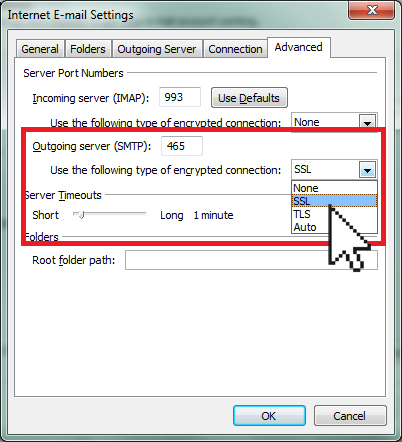
If the access site uses proxies, the SSL traffic is likely to be denied because it does not follow standard HTTP or DNS communications protocols. If the access site uses packet filters, the SSL traffic should pass. These ports are allowed by almost all Internet connections.

We recommend that you choose TCP port 53, or UDP port 53 (DNS) to keep this advantage. This is one of the main advantages of SSL VPN over other Mobile VPN options. By default, Mobile VPN with SSL operates on the port and protocol used for encrypted website traffic (HTTPS) to avoid being blocked. Mobile VPN with IPSec uses specific ports and protocols that are blocked by some public Internet connections. If you need to change the default port or protocol for Mobile VPN with SSL, we recommend that you choose a port and protocol that is not commonly blocked.
#Default ssl port how to#
How to Choose a Different Port and Protocol Mobile VPN with SSL traffic is always encrypted with SSL, even if you use a different port or protocol. If you have an additional external IP address that does not accept incoming TCP port 443 connections, you can configure it as the primary IP address for Mobile VPN with SSL. The Firebox protects a Microsoft Exchange server with Microsoft Outlook Web Access configured.The Firebox protects a web server that uses HTTPS.If you try to configure the Firebox to use a port and protocol that is already in use, you see an error message.Ĭommon network configurations that require the use of TCP 443 include: The default protocol and port for Mobile VPN with SSL is TCP port 443. This is required if you use a truststore other than the default /conf/ the Port and Protocol for Mobile VPN with SSL See Encrypt Agent Credentials.Ĭontroller Keystore Filename: The path of the Agent truststore relative to /conf.
#Default ssl port password#
If you have enabled the Secure Credential Store, encrypt the password you enter here. It is 443 for AppDynamics SaaS.Ĭontroller SSL Password: The plain text password for the Agent truststore.
#Default ssl port full#
See Machine Agent Configuration Properties for full details on each property.Ĭontroller Host: Should be the same as either the Common Name or the Subject Alternative Name (SAN) in the certificate configured for the Controller.Ĭontroller Port: The SSL port for the Controller.

Run the Java keytool command to create the Agent truststore:ĪppDynamics recommends you take the following security measures to prevent tampering with the Machine Agent truststore: The root certificate for the internal CA that signed the Controller certificate for your on-premises Controller The root certificate for the publicly known certificate authority (CA) that signed the certificate for your on-premises Controller.DigiCert Global Root CA for the AppDynamics SaaS Controller.Obtain one of the following root certificates:.To establish trust between the Machine Agent and the AppDynamics Controller, you must create an agent truststore that contains the root certificate for the authority that signed the Controller's certificate. The Controller uses a self-signed certificate.Įstablish Trust for the Controller's SSL Certificate.Some companies maintain internal certificate authorities to manage trust and encryption within their domain. A CA internal to your organization signed the certificate.This applies for DigiCert, Verisign, Thawte, and other commercial CAs. A publicly known certificate authority (CA) signed the certificate.The signature method for the Controller's SSL certificate:.For on-premises Controllers: Default SSL port is 8181, but you may configure the Controller to listen for SSL on another port.The Machine Agent supports extending and enforcing the SSL trust chain when in SSL mode. It assumes that you use a SaaS Controller or have configured the on-premises Controller to use SSL. This page describes how to configure the AppDynamics Machine Agent to connect to the Controller using SSL.


 0 kommentar(er)
0 kommentar(er)
